BLOG - Page 2
Recently created mixtures:

Sea-Buckthorn Macerated oil
February 7, 2019

Home made air freshener
June 29, 2016

Homemade Dog-rose distillate
June 28, 2016

Homemade jasmine distillate
June 22, 2016

Moxibustion treatment with Moxa stick
May 30, 2016

Face and body gentle oil cleanser
May 26, 2016
BLOG / LATEST ADDITIONS!
Japanese Rose otto (Rosa Rugosa) ☸ Essential oils ☸ Base / General

 Botanical Name: Rosa Rugosa
Botanical Name: Rosa RugosaCommon Method of Extraction: Steam distilled
Part Typically Used: Flowers
Color: Clear / Light yellow
Consistency: Mobile liquid that congeals upon cooling
Perfumery Note: Middle / Top
Strength of Initial Aroma: Deep, soft, honey-spicy
Japanese Rose is called “Hamanasu” in Japan. The flowers have a rose-like scent. It is a wild rose which is native to the coast of northern Japan and it is characteristic in that only one flower blooms per plant.
Japanese Rose oil is among the rarest essential oils in the world. It doesn’t take much to find the finest Bulgarian, Turkish, or French rose oil, but very few essential oil suppliers ever have Japanese Rose oil.
Applied to the smell strip the aroma of this Japanese Rose otto is initially messy, showcasing a crisp rose freshness in the top, somewhat green weedy. As time progresses on the strip, the aroma as having a rose and fruit character, this eventually and perhaps bizarrely transitions into a dewy early morning rose profile with slight rose powdery undertones.
If you love rose oils, you’d know that ottos are generally yellow/gold in profile (and color), distinguished in degrees by a certain citrus/lemony not that is more pronounced, more dense, smoother or sharper, depending on the freshness of the petals and the quality of the extraction. A fine rose otto is as good as rose oil gets.
Submitted by OperaDreamhouse (February 6, 2024)
Calamus Root Essential Oil (Acorus Calamus L.) ☸ Essential oils ☸ Base / General

 Botanical Name: Acorus Calamus
Botanical Name: Acorus CalamusCommon Name: Calamus , Rat Root , Sweet Flag , Sweet Myrtle , Sweet Root , Sweet Sedge
Common Method of Extraction: Steam distilled
Part Typically Used: Roots
Color: Yellow to yellowish brown
Consistency: Slightly viscous liquid
Perfumery Note: Base
Strength of Initial Aroma: Spices with a woody base, characteristic of calamus root, sweet, reminiscent of the smell of laurel leaves and nutmeg.
Calamus oil has an unusual aroma that is loved by perfumers who create oriental perfumes. It is often used as a scent fixer at concentrations as low as 0.01% in men’s, woody and oriental fragrances. Calamus Root oil is warm and spicy yet fresh scent makes it a unique and popular addition to cosmetic products.
Submitted by OperaDreamhouse (February 6, 2024)
Calamus Root Essential Oil (Acorus Calamus L.) ☸ Essential oils ☸ Spiritual Practises

 Often acclaimed as an ideal herb for meditation and introspection, Calamus is recommended by saints, yogis and Ayurvedic philosophers for enhancing the functions of the brain, improving memory power, increasing intellectual capacity and for stimulating proper circulation to the brain.
Often acclaimed as an ideal herb for meditation and introspection, Calamus is recommended by saints, yogis and Ayurvedic philosophers for enhancing the functions of the brain, improving memory power, increasing intellectual capacity and for stimulating proper circulation to the brain.Submitted by OperaDreamhouse (February 6, 2024)
Kunzea Essential Oil (Kunzea Ambigua) ☸ Essential oils ☸ Base / General

 Botanical Name: Kunzea ambigua
Botanical Name: Kunzea ambiguaCommon Method of Extraction: Steam distilled
Part Typically Used: Leaves and twigs
Color: Transparent
Consistency: Thin
Perfumery Note: Top to Middle.
Strength of Initial Aroma: A pleasant and fresh aroma with some spicy undertones, carrying the scent of the Australian bush.
Aromatically, Kunzea Oil has a pleasant scent with clean, fresh, invigorating undertones. The aroma is often compared to the scent of the Australian bush, transporting you away from the everyday and into the fresh air of nature.
The Kunzea plant, with its bulbous tops and whimsical blossoms, is commonly referred to as "White Cloud", as well as "Tick Bush", recalling one of its traditional uses of controlling ticks on cattle in the outback. Kunzea Essential Oil has comparable properties and uses to Tea Tree Oil but offers a more pleasant aroma and milder sensation when applied topically.
Submitted by OperaDreamhouse (February 4, 2024)
Rosalina Essential Oil (Melaleuca Ericifolia) ☸ Essential oils ☸ Base / General

 Botanical Name: Melaleuca Ericifolia
Botanical Name: Melaleuca EricifoliaCommon Method of Extraction: Steam distilled
Part Typically Used: Leaves and twigs
Color: Clear, and colorless liquid
Consistency: Thin
Perfumery Note: Top
Country of Origin: Australia
Strength of Initial Aroma: Fresh, floral, and woody, calming, sweet, rose-like, slightly Eucalyptus-like aroma
Melaleuca Ericifolia shrub, a member of the Myrtle family, growing wild in the swampy forests of Australia. Commonly known as Swamp Paperbark, the Melaleuca Ericifolia shrub have a Rosemary-like appearance and grows primarily in coastal regions where it is able to withstand permanently wet soil, salty conditions, and shade.
Lemony and Lavender Rosalina toes the line between calming and energising. A scent unlike any other, Rosalina is akin to an Australian bush Lavender.
With a pleasant, mild scent, heather Myrtle essential oil, also known as Rosalina, or Lavender Tea Tree in the aromatherapy world, is the perfect substitute for pungent Tea Tree and Eucalyptus oils.
With its sweeter aroma, this makes it useful for children. It is antiviral, anti-fungal, and a good support for the respiratory system. It soothes restlessness and dissolves conflict.
Submitted by OperaDreamhouse (January 26, 2024)
Basil Leaf Selected CO2 Extract (Ocimum Basilicum) ☸ Essential oils ☸ Base / General
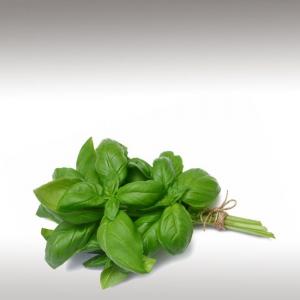
 Botanical Name: Ocimum Basilicum
Botanical Name: Ocimum Basilicum Common Method of Extraction: Co2 Extract
Part Typically Used: Leaves
Color: Clear, and colorless liquid
Consistency: Thick
Perfumery Note: Top
Country of Origin: India
Strength of Initial Aroma: Spicy and sweet aroma. It smells like fresh scent having a balsamic woody back note.
During co2 extraction, the natural smell and green aroma preserved better than steam distillation.
Basil is an annual spicy plant generally utilized as a flavouring agent for food. Basil leaves also have pharmaceutical properties due to the presence of polyphenols, phenolic acids, and flavonoids. In this work, carbon dioxide was employed to extract bioactive compounds from basil leaves.
Submitted by OperaDreamhouse (January 26, 2024)
Valerian Essential Oil (Valeriana officinalis) ☸ Essential oils ☸ Base / General
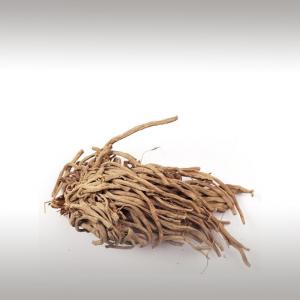
 Botanical Name: Valeriana Officinalis
Botanical Name: Valeriana OfficinalisCommon Method of Extraction: Steam distillation
Part Typically Used: Root
Color: Dark Red-Amber
Consistency: Thick
Perfumery Note: Base
Country of Origin: Nepal
Strength of Initial Aroma: Bittersweet, balsamic, medicinal, with notes of musk and earth
Valerian Essential Oil commonly used in aromatherapy to help provide a calming and restorative effects due to the high amounts of sesquiterpenes in the oil. Due to these properties, Valerian Essential Oil can be used to assist with restlessness, sleeplessness, trauma or emergency situations.
Valerian is native to Europe and Asia, so many of us have been familiar with it since childhood and it has been used extensively in folk medicine for sleeplessness and nervousness.
Submitted by OperaDreamhouse (January 26, 2024)
Cornmint Essential Oil (Mentha Arvensis) ☸ Essential oils ☸ Base / General
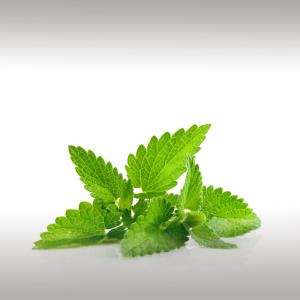
 Botanical Name: Mentha Arvensis
Botanical Name: Mentha ArvensisCommon Method of Extraction: Steam distilled
Part Typically Used: Leaves
Color: Thin and clear, with a tinge of yellow
Consistency: Thin
Perfumery Note: Top
Country of Origin: India
Strength of Initial Aroma: Strong, fresh and minty
Corn Mint Essential Oil, also known as Wild Mint Essential Oil, Japanese Mint or Field Mint is steam distilled from the richly aromatic, vibrant green leaves of the Mentha Arvensis.
Its fragrance gives off fresh aromatic notes, both minty and herbaceous. In perfumery, it is mainly used as an accessory to bring freshness to a top set, especially on green and fruity creations. This essential oil has a full-bodied, strong minty, warm, herbaceous aroma presenting a top fragrance note.
A refreshing must-have!
Cornmin Mint is closer in scent to Peppermint, and because of its extremely fresh and pleasant aroma, cornmint essential oil is valued in the perfume, soap, cosmetic and food flavourin. Cornmint can be a practical substitute for Peppermint Essential Oil due to its lower cost.
Corn Mint Essential Oil is high in Menthol and tends to crystallize in cool temperatures. If this should happen, simply setting vial of essential oil in a bowl of warm water and the crystals will dissolve.
Submitted by OperaDreamhouse (January 25, 2024)
Cornmint Essential Oil (Mentha Arvensis) ☸ Essential oils ☸ Spiritual Practises

 Emotionally and energetically, Corn Mint Essential Oil is thought to inspire mental calmness and emotional stability. The minty-sweet aroma can empower and soothe mood, while balancing out thoughts and promoting openness and positivity.
Emotionally and energetically, Corn Mint Essential Oil is thought to inspire mental calmness and emotional stability. The minty-sweet aroma can empower and soothe mood, while balancing out thoughts and promoting openness and positivity.Submitted by OperaDreamhouse (January 25, 2024)
Valerian Essential Oil (Valeriana officinalis) ☸ Essential oils ☸ Base / General

 Botanical Name: Valeriana Officinalis
Botanical Name: Valeriana OfficinalisSubmitted by LiquidSpace (January 25, 2024)
Mastic Tree Leaf Essential Oil (Pistacia Lentiscus) ☸ Essential oils ☸ Base / General
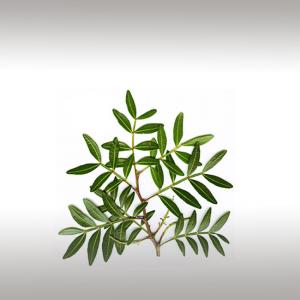
 Botanical Name: Pistacia Lentiscus
Botanical Name: Pistacia LentiscusCommon Method of Extraction: Steam distilled
Part Typically Used: Fresh Leaves
Color: Colorless to pale yellow, transparent
Consistency:
Perfumery Note: Middle / Top
Aromatic Profile: Earthy, radiant, herbaceous, balsamic, sweet coniferous-turpentine-like aroma with highly aromatic, warm, woody tonalities.
Mastic Essential Oil is distilled from the fresh leaves of the Pistacia Lentiscus tree, which is a relative of the pistachio and is also the source of Mastic Gum, a beautiful incense resin. Pistacia Lentiscus is native throughout the Mediterranean region, from Morocco and the Iberian peninsula in the west through southern France and Turkey to Iraq and Iran in the east.
Submitted by OperaDreamhouse (January 24, 2024)
Hop CO2 Extract (Humulus Lupulus) ☸ Essential oils ☸ Medicine / Health
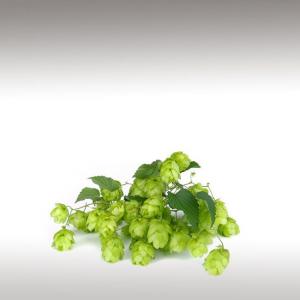
 Hops CO2 Extract Humulus is recommended for use for its sedative and antibacterial, anti-inflammatory, antimicrobial, anti-oedematous and anti-cancer activity.
Hops CO2 Extract Humulus is recommended for use for its sedative and antibacterial, anti-inflammatory, antimicrobial, anti-oedematous and anti-cancer activity.In Indian Ayurvedic medicine hops is recommended for its sedative and antibacterial activity. strong anti-inflammatory, antimicrobial, anti-oedematous and anti-cancer activity.
Submitted by OperaDreamhouse (June 15, 2023)
Hop CO2 Extract (Humulus Lupulus) ☸ Essential oils ☸ Beauty / Cosmetics

 Hops CO2 Extract Humulus (Humulus Lupulus) good efficacy against gram-positive bacteria makes the hop extract especially suitable for deodorising soaps, shower gels, deodorising sticks and aerosol sprays as gram-positive bacteria are responsible for producing unpleasant body odours.
Hops CO2 Extract Humulus (Humulus Lupulus) good efficacy against gram-positive bacteria makes the hop extract especially suitable for deodorising soaps, shower gels, deodorising sticks and aerosol sprays as gram-positive bacteria are responsible for producing unpleasant body odours.Submitted by OperaDreamhouse (June 15, 2023)
Hop CO2 Extract (Humulus Lupulus) ☸ Essential oils ☸ Base / General

 Botanical Name: Humulus Lupulus
Botanical Name: Humulus LupulusCommon Method of Extraction: CO2 supercritical extraction
Part Typically Used: Flowers / Stobiles
Color: Yellowish-brown
Consistency: Thick liquid
Perfumery Note: Middle
Strength of Initial Aroma: Strong, clear, crisp, pungent, green herbaceous, slightly citrusy
Self life: 6 years
The Hop plant is a perennial herb that grows in vines. Native to Europe, Western Asia, and North America, it is known for the speed and persistence of its growth. Most people are familiar with hops because of its role in beer-making, although it also featured in ancient kitchens and the medical recipes of herbalists.
Hops CO2 Extract Humulus (Humulus Lupulus) was discovered in the Middle Ages and from that time on became highly valued as a flavour and preservative in beer. First widely used in beer by monks in 9th- and 10th-century Germany.
The aroma of Hops is usually strong and pungent, but since this CO2 select extraction, the garlicky pugent notes softened and rounded out with clear and crisp green top notes. The middle herbaceous notes are freshened with lively citrus and a valerian - like back note. Fragrance connoisseurs will appreciate a sweet, fruty melion back note as well. In perfumery, Hops offers a bitter - green note that adds a unique dimension of uplifting brightness in pine, fougere, citrus (particulary lime).
Submitted by OperaDreamhouse (June 15, 2023)
Hyssop Decumbens Essential Oil (Hyssopus Officinalis var. Decumbens) ☸ Essential oils ☸ Base / General
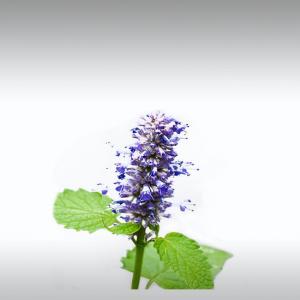
 Botanical Name: Hyssopus Officinalis
Botanical Name: Hyssopus OfficinalisCommon Method of Extraction: Steam or hydro distillation
Part Typically Used: Flowering tops, leaves
Color: Pale yellow to yellow-green
Consistency: Light and clear
Perfumery Note: Middle
Strength of Initial Aroma: Powerful, fresh, cool woody, lavender- and eucalyptus-like moderately sharp aroma with a spicy, warm undertone
Self life: 6 -7 years
Hyssop Decumbens has an aroma that is powerful, fresh, cool woody, lavender- and eucalyptus-like and moderately sharp with a spicy, warm undertone. Hyssop is known for its many traditional uses going back at least 2000 years.
Hyssop Decumbens essential oil is commonly described as having a light and clear texture, similar to many other essential oils.
The aroma of Hyssop Decumbens is pleasant and sweetly comphoraceous with a slight reminiscent of lavender and light minty smell.
Submitted by OperaDreamhouse (June 15, 2023)
Page 2 of 48

